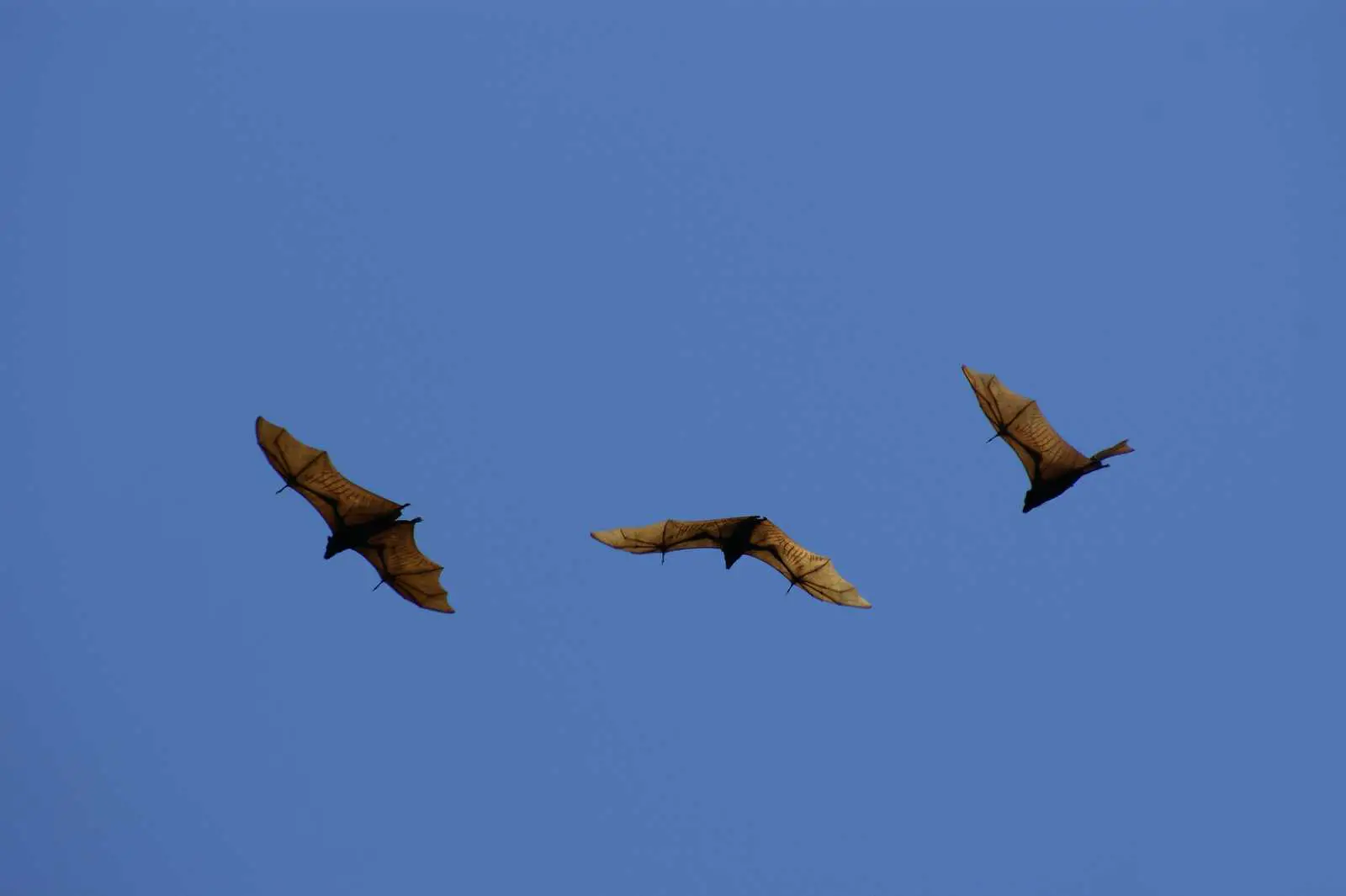Bats have something of a bad rap when it comes to humans. The first thing many people think of when they think of a bat is a blood-sucking creature of the night linked to vampire legends – and being connected with Count Dracula isn’t exactly the nicest of associations. Dig a bit deeper into bats’ background and the information you find is bound to turn up even more unsavory facts, from their role as a rabies spreader to their place in Chinese meat markets to their association with SARS and more.
Unfortunately, this isn’t a case where there’s a twist to those facts and it turns out something advertised as dangerous is actually just a harmless little fuzzball. There is no denying that bats are indeed dangerous to humans. That being said, while bats are dangerous, they are a “danger” that can usually be easily avoided.
With that in mind, let’s take a closer look at why bats can be dangerous for humans, but don’t tend to go out of their way to attack them.
Bats, Sharks, and Bad Raps
In a sense, bats are dangerous to humans in the same way that sharks are. Between Dracula and Jaws, books and films have long told us to fear both as man-eating monsters, but that’s simply not true. Shark attacks are extremely rare, and the number of attacks per millions of people has trended downward over the decades.
The same holds true for bats. According to the Idaho Department of Fish and Game, bats are gentle creatures and don’t tend to attack humans. Indeed, attacks are relatively rare, but that hasn’t stopped tabloids like the New York Post and Metro from carrying sensationalist stories of vampire bats attacking people in Brazil even while admitting the rarity of such incidents.
What’s more, while vampires may suck your blood with a sexy neck bite, vampire bats actually target big toes, since there’s a lot of blood there. Needless to say, a bat biting your big toe is a pretty rare occurrence. What’s more, the idea of bats “sucking your blood” may be a bit of a misnomer, since some bats instead make a tear in the skin and lap up the blood like a cat lapping up milk. After a nice meal of blood, bats can be so full that their bodies become too engorged to fly home, instead forcing them to crawl away and digest their food before slimming down so they can fly home again.
Rabies, SARS, COVID, and Other Diseases
By far the biggest danger associated with bats is rabies. They are the leading transmitters of rabies among animals in the US, being responsible for 7 in 10 rabies deaths. That said, as noted in The Independent, urbanization in the UK and the subsequent destruction of bats’ natural habitats is on the rise. However, that same article cites only one case of rabies transmission since 2002 in the UK. In fact, in the UK, unvaccinated dogs or cats are statistically a bigger rabies risk than bats.
Of course, it isn’t just rabies which bats have been found to carry. Bats have also been linked to SARS, with researchers such as Linfa Wang pinpointing the likely source of the initial outbreak to a single population of horseshoe bats in 2005. In 1994, Wang also traced the outbreak of the Henda virus, then found in some horses in Australia, to bats as well.
There is also a question of whether our current COVID pandemic came from bats, with Wang heading a new team looking into that question. That said, whether or not they are eventually linked to COVID as well, scientists stress that bats are not to blame. For one thing, while they are a prime suspect, it still hasn’t been proven that the virus leapt from bats to humans, and even if it did, that has more to do with human proximity to them than bats. As demonstrated above, bats do not seek out humans to bite, making potential human actions such as building in bats’ territory or selling them in markets unnecessary and dangerous.
Even bat guano, so long prized by farmers for its extraordinary fertilizing ability, has its dangers, as it can carry a soil fungus which causes Histoplasmosis.
Still, the question remains – why are bats in particular so “adept” at being carriers of disease-causing elements? Bats are known to be carriers of at least 60 zoonotic viruses. For one thing, not only are humans encroaching on bats’ territory, but bats already live in very close quarters with one another, thus increasing the chance of transmission from bat to bat. Wang also believes that bats’ ability to fly may have something to do with it. The amount of energy they expend in order to fly eventually leads to damage to their DNA. Wang contends bats mitigate this in part by lowering their immune system responses to this damage, which in turn makes them good hosts for RNA viruses such as SARS.
What’s Behind Bat Attacks?
While it is true that bat attacks have seen a slight rise in recent years, helping to contribute to the sensationalism in tabloids about bat attacks, the fact is, as with shark attacks, that it’s us more than the animals who are to blame. Sharks have more to fear from humans, and tend to avoid them, and bats likewise don’t tend to target humans. Both sharks and bats hunt other animals instead, such as seals or frogs, respectively, so why risk attacking humans, who can attack back?
Simply put, because we’ve made those seals and frogs vanish. Human encroachment into animals’ natural habitats often robs them of valuable food sources, and this is the case for both sharks and bats. If humans destroy their natural habitat, and cause their other food sources to disappear, it shouldn’t be a surprise that they “mistake” humans for prey every once in a while, especially with their primary food sources disappearing thanks to urban development and corporate encroachment.
What’s more, many bat species are protected under existing conservation laws. It is thus not only personally but legally dangerous to encroach into their territory. In British Columbia – home to 16 of Canada’s 20 native bat species – many bat species are protected by the BC Provincial Wildlife Act, with similar laws protecting them in other countries.
Protecting Yourself Against Bats
The most important thing you can do to avoid a bat attack, therefore, is simply to respect bats’ space and not intrude into their natural environment. Don’t go poking your way around bat caves or areas where bats are frequently found at night, and you’ll almost certainly be fine.
If you keep livestock, make sure you bring them in for the night, or at least ensure that you have bat repellents which can help keep them safe.
The CDC guidelines for bat safety at home are as follows:
- Keep doors closed during the night
- Caulk openings which measure 0.25” x 0.5” or greater
- Install screens and window coverings
- Cover all entry points to your attic
- Inform animal control if you have bats in your attic
- Fill electrical or plumbing spaces with materials such as stainless steel wool
Bats can sometimes be carriers of disease, but as long as you keep clear of their habitat and take proper precautions to protect your home, you should have nothing to fear from them.

